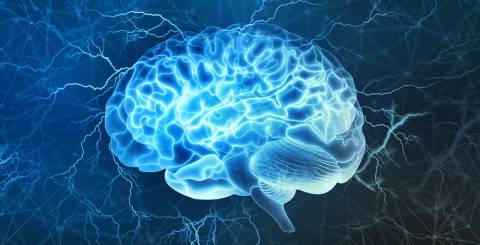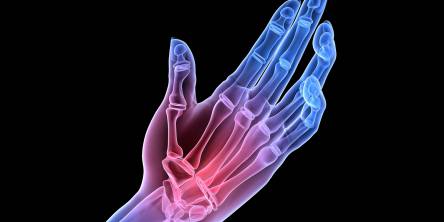6 Facts About Migraines You Should Know About

Even though migraine affects over one billion people around the world, it has long been neglected as one of the most devastating diseases on the planet. Migraine headaches are a neurological disorder characterized by recurrent pounding or throbbing headaches, nausea and vomiting, and sensitivity to light, sound, and strong odors. Headache is usually one-sided; however, it can sometimes be bilateral. Here are six interesting facts about migraines that you should be aware of.
1. Migraine isn't 'just a headache
Migraines are not the same as headaches. The head pain associated with this condition can be extremely bothersome and debilitating, and it usually combines accompanying symptoms such as:
- Nausea or vomiting.
- Sensitivity to light, noise, and/or scent
- Visual or sensory problems (including temporary sight loss)
- Dizziness
- Difficulty thinking or focusing
- Anxiety or low mood
Migraine episodes can be debilitating, stopping people from working, doing their usual domestic chores, or socializing. Patients frequently require migraine relief and relaxation in a quiet, dark environment for their recovery.
2. Migraines are quite common
Migraines impact roughly one billion individuals. It makes them the world's third most common health issue. Despite their prevalence, migraines are frequently misunderstood and underestimated in their severity. Migraines have a significant impact on daily life, resulting in lost workdays and social gatherings. They also have a negative impact on people's quality of life. Understanding their prevalence emphasizes the necessity of awareness and accurate diagnosis.
3. Migraines are more common in women
Three out of every four migraine patients are women, and more than 25% have experienced at least one migraine. Although the majority of the causes of these incapacitating headaches are still unclear, researchers have discovered a strong correlation between the risk of migraines and changes in hormone levels.
The major cause is estrogen, which is the primary sex hormone in women. A woman's menstrual cycle can be divided into two stages: the follicular phase and the luteal phase. Right after ovulation, estrogen levels decrease, gradually increasing again at the start of the next cycle. This sudden decrease in estrogen levels may be responsible for migraines and so-called monthly headaches in women. In reality, migraines tend to improve, if not disappear, after menopause, when estrogen and other hormone levels stabilize.
4. Children can also suffer from migraines
Typically, one child in each classroom may get headaches or migraines. Children's headaches are distinct and might be short-term. You must make assumptions since they cannot tell you what is going on. They may just desire a quiet area, not because they are cranky but because they dislike noise. Migraines can have a significant influence on school attendance and students' ability to learn.
5. Some people with migraines have auras
Aura (certain feelings or sensations) is experienced by approximately one in every five migraine sufferers prior to the onset of pain. It can be a visual aura (dark, bright, or zigzag patches or loss of vision in the center or sides) or a sensory aura (feeling like pins are stuck in your arms, legs, or sides). Sometimes, people struggle to comprehend what others are asking them, or they understand but can't find the words to respond. Auras often last between five and 55 minutes. The headache discomfort normally begins within an hour after the aura has passed.
6. Migraines are often preventable
The goal is to address migraine symptoms right away and to prevent symptoms by avoiding or changing triggers. When a migraine is mild, over-the-counter pain relievers like acetaminophen, ibuprofen, or aspirin can be quite beneficial. If these treatment options are unsuccessful or the migraines are frequent, a neurologist may prescribe medication.
Botox injections are another FDA-approved treatment option for chronic migraine prevention. Every three months, patients receive several Botox injections. These preventative measures act by inhibiting the production of inflammatory pain chemicals, which trigger migraines.
The FDA also approved Aimovig for the prevention of migraines. Aimovig is administered as a monthly injection that inhibits the action of a molecule associated with migraine headaches.
Similar Articles
Veins on the skin that produce swelling may indicate varicose veins. Varicose veins are a vein disorder, and their role is to return blood from the leg to the heart. The specific cause of varicose veins, a prevalent condition, is unknown.
A healthy spine is the foundation of a functioning body. It supports your frame while allowing you to bend, flex, and move more freely. However, most people neglect the importance of spine health until they have a back condition.
Whether you're having trouble moving body parts or experiencing worsening joint discomfort, an orthopedic doctor can help. They can treat anything from a minor strain to complex treatments such as shoulder replacement. The appropriate treatment from an orthopedic expert at the right time might relieve your pain and improve your symptoms in less time.
When it comes to trauma, professionals in the mental health sector readily admit that no single style of therapy or intervention is appropriate for every case or individual.
Rheumatoid arthritis (RA) is a type of autoimmune disease that occurs when the body's immune system attacks the lining of joints, causing inflammation and causing symptoms like pain and stiffness. RA usually affects both sides of the body in a similar way, but small joints of the hands and feet are often affected first, often knuckle joints of the fingers.
An electroencephalogram (EEG) is a test that measures the electrical activity in the brain. Healthcare experts utilize it to evaluate and comprehend neurological illnesses, sleep disorders, and brain damage.
So, your back decided to stage a mutiny and gift you with a herniated disc. Lovely. Now what? If you’re imagining a future filled with endless discomfort and groaning every time you get out of bed, don’t fret. There are plenty of ways to tackle a herniated disc and get back to living your best, pain-free life.
Back pain – it’s not just a matter of “I lifted a heavy box, and now my back hurts.” It’s often the result of a complex dance between our minds and bodies, with stress, anxiety, and emotions playing lead roles. If you’ve ever woken up with a stiff back after a tough week or felt your spine twinge just from reading a long email chain, you’re not alone.
Chronic pain is a medical problem that affects many people around the world. Unlike acute pain, which is a short-term response of the body to tissue damage, chronic pain lasts longer, often without obvious physical damage. It can last from several months to several years, and its consequences can affect all aspects of a person's life









